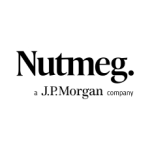Why You Shouldnt Put All Your ISAs In One Basket
08 March 2011 / by Paul Dicken
Not keeping all of your eggs in one basket, limiting your exposure or building a multi-asset portfolio; however you describe it, diversification is a constant theme for investors.
The ideas behind diversifying investments have a long history. At its simplest level diversification could be keeping some of your savings in a cash account with a bank or buildings society, while using the remainder of your savings to invest in a stocks and shares ISA investing in the UK stock market or globally.
While the capital invested in stocks and shares is put at higher risk it has the potential for higher returns, and so the overall savings portfolio has some assets invested at low risk with limited returns, and some invested in higher risk assets with higher potential for growth.
And as the ISA deadline rapidly approaches, we look at how you could make the most of this year’s and your previous year’s ISA investments.
The theory
In broad terms there are perhaps two main elements that underpin diversification as an approach to investment.
Firstly, by investing in different assets, particularly uncorrelated markets (markets that do not move up or down at the same time) you reduce the risks and volatility inherent with most investments in stock markets or commodity markets.
Secondly, that timing the market accurately is very difficult, highly risky and, some would argue, almost entirely down to chance.
The Consumer Financial Education Body (CFEB) Money Made Clear website says: “These risks [with investments] can be reduced, but not eliminated altogether, by diversification. Diversification simply means spreading the risk of investing over a range of investments – in other words not putting all your eggs in one basket.”
Risk and return
One aspect of spreading investments across assets is that the return may be less than a concentrated investment solely in a high growth area, but the levels of risk are reduced by investing across different assets.
Head of savings and investments at Fair Investment, Nick Scarrett, says investors willing to take on high levels of risk to their capital may choose not to diversify their investments as it may ‘dilute their eventual return’.
“Investors prepared to take on higher risk may do their own research and have the courage of their convictions to maximise potential returns in a more concentrated area. However, this strategy shouldn’t be undertaken by investors who cannot stomach large falls in value or the possibility of losing their entire investment,” he said.
Multi-asset solutions
In recent years the investment industry has developed in ways that allow investors to diversify their own investments. This could be through a single multi asset fund, a portfolio of funds or using an investment platform or wrap provider to access a variety of investment options.
Funds
In the Fair Investment Select 100 list of funds there are funds that take an approach influenced by modern portfolio theory to invest across various assets.
The Fidelity Multi Asset Strategic Fund is designed to perform in all market conditions with exposure to five asset classes: cash, bonds, equities, property and commodities. The make-up of the portfolio can be altered as the manager of the fund seeks to respond to global economic cycles.
Similarly the Scottish Widows Investment Partnership Multi-Manager Diversity Fund has exposure to a range of assets, through other managed funds that are carefully selected by the SWIP management team.
These funds seek to deliver a return in all market conditions by taking a relatively conservative approach. They are not immune to market shocks or falls, but can limit the potential losses if markets suffer significant shocks.
Portfolios
The Fair Investment ISA and Investment Account, and SIPP include access to seven portfolios of managed funds compiled and rebalanced by independent researchers Rayner Spencer Mills.
The portfolios provide exposure to different markets or assets to meet an investment objective, such as providing income or growth, or taking on different levels of risk. Not all of these portfolios can be considered multi-asset, however. For example the growth portfolio invests solely in equities but across a variety of different markets e.g. the Standard Life UK Smaller Companies Fund and Aberdeen Emerging Markets Fund are in the portfolio.
Creating your own portfolio
Services, like the Fair Investment ISA and Investment Account can allow investors to select and manage their own portfolios, facilitating diversification by providing access to a wide range of investment choices.
Although through Fair Investment Company more than 2,800 investments are available, Rayner Spencer Mills have compiled a Select 100 list of funds they have rated, which includes funds investing in government bonds, corporate bonds, UK equities, global equities, emerging markets, property and smaller companies.
On top of this there are passive funds that track sector indices or market indices, often at lower costs, such as the Legal & General Global Technology Index fund or Vanguard US Equity Index fund.
No news, feature article or comment should be seen as a personal recommendation to invest.
The value of investments and income from them can fall as well as rise and you may not get back the full amount invested. Different types of investment carry different levels of risk and may not be suitable for all investors.
Prior to making any decision to invest, you should ensure that you are familiar with the risks associated with a particular investment. If you are in any doubt as to the suitability of a particular investment, both in respect of its objectives and its risk profile, you should seek independent financial advice.
© Fair Investment Company Ltd
Tags





